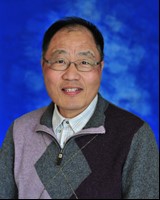题 目:Detection of Sources in Non-negative Blind Source Separation by Minimum Description Length Criterion
报告人:Prof. Chong-Yung Chi (祁忠勇), National Tsing-Hua University
时 间:10月31日 下午3:00-5:00
地 点:伟德BETVLCTOR1946中心校区 bv伟德源自英国始于1946 四楼报告厅
报告摘要:
While non-negative blind source separation (nBSS) has found many successful applications in science and engineering, model order selection, determining the number of sources, remains a critical yet unresolved problem. Various model order selection methods have been proposed and applied to real-world datasets but with limited success, with both order over- and under- estimation reported. By studying existing schemes, we have found that the unsatisfactory results are mainly due to invalid assumptions, model oversimplification, subjective thresholding, and/or to assumptions made solely for mathematical convenience. Building on our earlier work that reformulated model order selection for nBSS with more realistic assumptions and models, in this talk, we introduce a newly and formally revised model order selection criterion rooted in the minimum description length (MDL) principle. Adopting widely-invoked assumptions for achieving a unique nBSS solution, we consider the mixing matrix as consisting of deterministic unknowns, with the source signals following a multivariate Dirichlet distribution. We derive a computationally efficient, stochastic algorithm to obtain approximate maximum-likelihood estimates of model parameters and apply Monte Carlo integration to determine the description length. Our modeling and estimation strategy exploits the characteristic geometry of the data simplex in nBSS. We validate our nBSS-MDL criterion through extensive simulation studies and on four real-world datasets, demonstrating its strong performance and general applicability to nBSS. The proposed nBSS-MDL criterion consistently detects the true number of sources, in all of our case studies.
报告人简介:

Chong-Yung Chi (祁忠勇) received the Ph.D. degree in Electrical Engineering from the University of Southern California, Los Angeles, California, in 1983. From 1983 to 1988, he was with the Jet Propulsion Laboratory, Pasadena, California. He has been a Professor with the Department of Electrical Engineering since 1989 and the Institute of Communications Engineering (ICE) since 1999 (also the Chairman of ICE during 2002-2005), National Tsing Hua University, Hsinchu, Taiwan. He has published more than 210 technical papers (with citations more than 3800 times by Google-Scholar), including more than 80 journal papers (mostly in IEEE Trans. Signal Processing), more than 130 peer-reviewed conference papers, 4 book chapters, and 2 books, including a new textbook (432 pages), Convex Optimization for Signal Processing and Communications, CRC Press, 2017 (which has been popularly used in an invited 2-week intensive short course 15 times in 8 major universities in China since 2010 before its publication). His current research interests include signal processing for wireless communications, convex analysis and optimization for blind source separation, biomedical and hyperspectral image analysis.
Dr. Chi is a senior member of IEEE. He has been a Technical Program Committee member for many IEEE sponsored and co-sponsored workshops, symposiums and conferences on signal processing and wireless communications, including Co-organizer and General Co-chairman of 2001 IEEE Workshop on Signal Processing Advances in Wireless Communications (SPAWC), and Co-Chair of Signal Processing for Communications (SPC) Symposium, ChinaCOM 2008 & Lead Co-Chair of SPC Symposium, ChinaCOM 2009. He was an Associate Editor (AE) of IEEE Trans. Signal Processing (5/2001~4/2006, 1/2012~12/2015), IEEE Trans. Circuits and Systems II (1/2006-12/2007), IEEE Trans. Circuits and Systems I (1/2008-12/2009), AE of IEEE Signal Processing Letters (6/2006~5/2010), and a member of Editorial Board of Signal Processing (6/2005~5/2008), and an editor (7/2003~12/2005) as well as a Guest Editor (2006) of EURASIP Journal on Applied Signal Processing. He was a member of Signal Processing Theory and Methods Technical Committee (SPTM-TC) (2005-2010), IEEE Signal Processing Society, a member of Signal Processing for Communications and Networking Technical Committee (SPCOM-TC) (2011-2016). Currently, he is a member of Sensor Array and Multichannel Technical Committee (SAM-TC), IEEE Signal Processing Society.